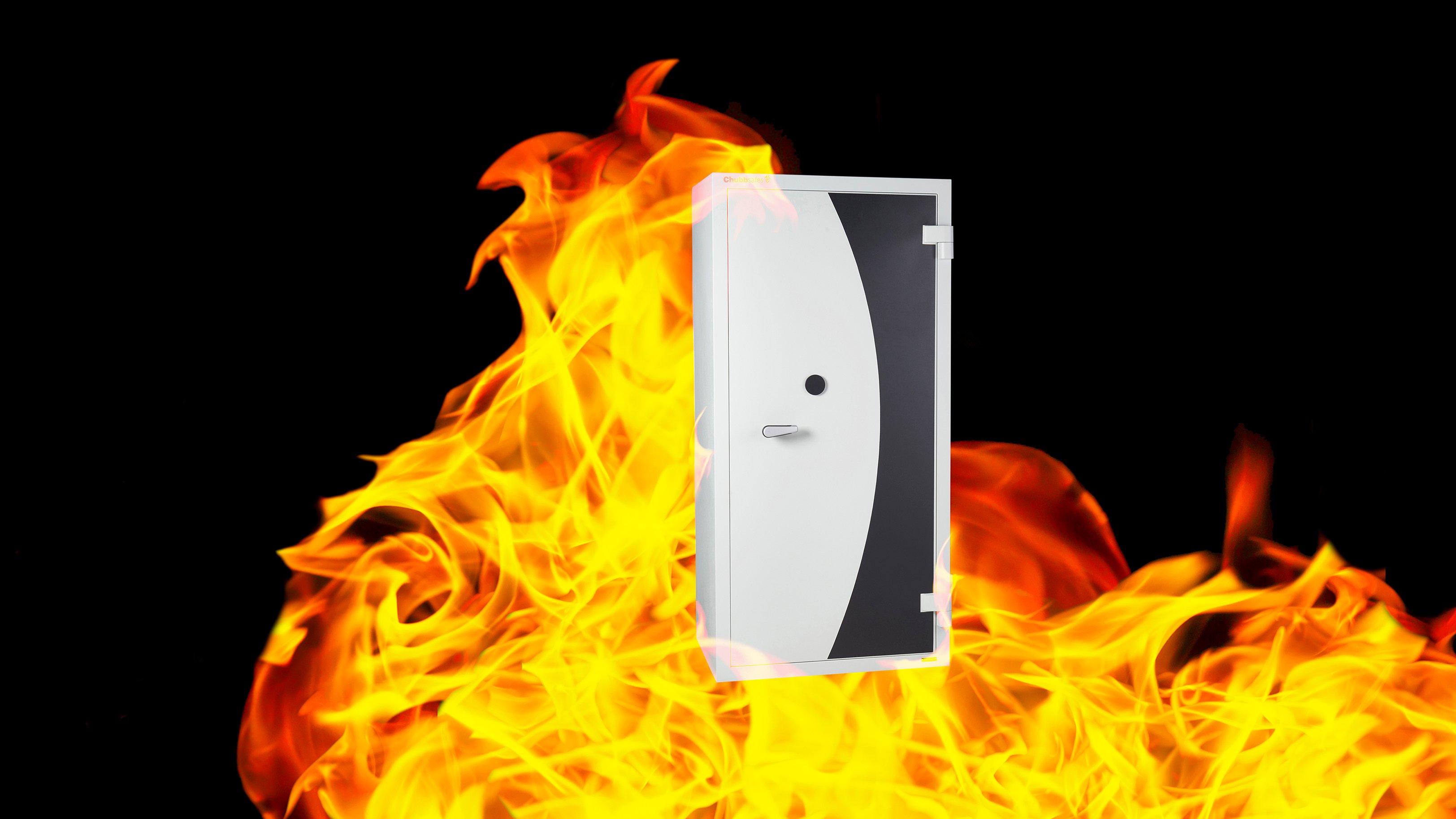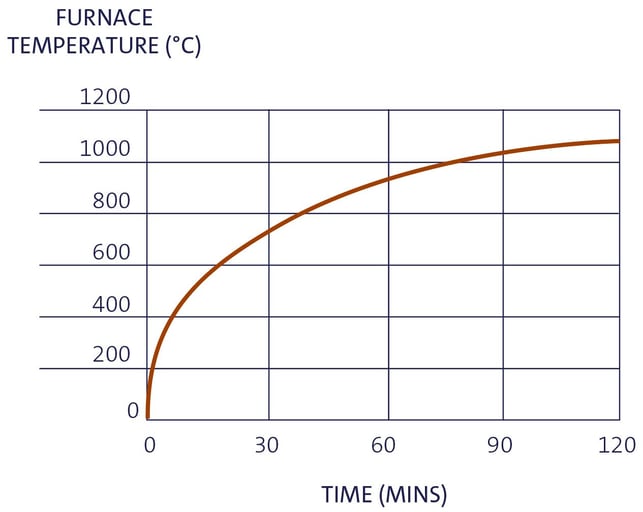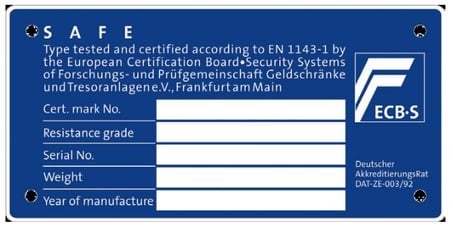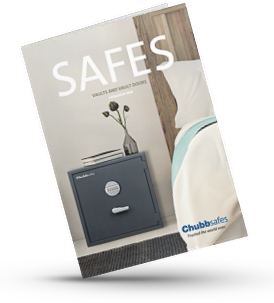
When people think about safes, they mostly think about burglary protection. However, there are many things you can lose in a fire that can cost time, money and even your business.
During more than 32 years of experience in this industry as a fireproof safes specialist and resident subject expert, I have had to correct a number of inaccurate beliefs. Here are just a few.
Aren’t all safes protected against fire, like they are for theft?
I’m afraid not. A burglary safe will give you some protection because the materials inside the walls act as insulators, but only for a short time and at relatively low temperatures. You can have huge differences in fire protection between safes that share the same certified level of burglary protection.
In terms of protection, it’s the same for any fire suppression system you may have in the building. If there is a fire in an IT room, for example, gas or chemical suppression systems can throw up a lot of debris because they are pressurised, destroying data, whilst sprinkler systems leave you with a soggy mess.
A fire safe is a silent insurance policy. It’s all about worst case scenario planning.
Even though insurance companies will impose criteria for how you secure your valuables, in most countries they are much less likely to pay attention to fire protection than to theft.
We were talking about the paperless office in the late 1980s – and we’re still talking about it now! Yes, there is the Cloud and a lot more people are using it. But often the original information needs to be stored in a data cabinet – it’s belt and braces to make sure your business is back on the road again with minimal disruption if there’s a fire. As digital media storage has got denser, with more and more data stored on smaller and smaller items, the vulnerability of businesses has just increased.
There are basically three levels of maximum internal temperature for fireproof safes: paper, where the temperature must remain below 170°C; data media (CDs, DVDs) (70°C) and data media (magnetic strips) (50 °C). If you’re only protected for documents, a fire will destroy the CDs or memory sticks inside your safe.

The following temperatures indicate the heat toleration levels, the point at which digital media and documents are lost to fire. It is a fire safe's job to ensure its internal temperature remains below these destructive levels.
If you haven’t got the information to re-populate your IT system after a fire, you haven’t got original contracts, invoices, stock records or machinery programmes, how are you going to trade?
For this reason, many businesses never entirely recover from a serious fire, losing orders, contracts and employee records. They may even go out of business altogether.
There is a great deal of small print in insurance policies and while you’re sorting it out it’s ‘happy days’ for your competitors. We don’t live in a world where people volunteer that they owe you money – so your cash flow dries up.
In all insurance claims the burden of proof is on the claimant – you must be able to prove that you had the items that were lost in the first place. What if all the deeds to your property are lost in a fire? It is then very difficult to prove you own your own building.
There are plenty. I have worked with a bank in the Middle East with 200 branches. Following a riot one of their banks burned down. That particular branch had all the loan agreements and property deeds for around 70,000 people from the area and the documents all went up in smoke. It’s estimated they lost hundreds of millions of dollars. In all likelihood, they will now start putting fireproof safes into all of their branches.
And if rioting isn’t your main concern, look at one of Sweden’s major banks. One night in February 2008, a massive fire swept through a branch in Stockholm, destroying hundreds of computers and vast quantities of material. The bank had recently installed fire-resistant safes, that kept key documents and data intact. They were fully operational again in just three days.
A fire safe is a silent insurance policy. It has no shelf life, it doesn’t deteriorate, it just does its job quietly in the corner day in day out.

You aren’t paying a premium every year, it is a one-off payment, a capital investment. For that investment you are safeguarding your company. It’s all about worst case scenario planning, the “what if” scenario – what if someone forgets to turn something off, or you have a disgruntled employee? What if the fire happens tonight?
There was a fire at a supermarket in the UK a few years ago. They had a large document safe, 2m by 1.2m with two doors weighing 700kg. A few weeks after the fire they found it in the basement – it had dropped through four storeys as the floors gave way, but everything inside was intact. Job done.
No. We’re talking about foamed, aerated, gypsum based concrete containing anything up to 80% water.
It’s concrete, but with water locked inside it. When it heats up, the water is slowly driven out of the concrete as steam, absorbing the heat – it’s called an endothermic reaction – and keeps the temperature down.
But remember contained steam creates pressure, we’ve all heard of boilers exploding. The best fire safes are specifically designed to release this build up in a controlled way to avoid such explosions.
And that’s just for documents – data safes are different. Here you have a composite barrier with an outer layer of foam concrete keeping the temperature down to 100°C, plus a layer of insulation such as a special polyurethane foam and a layer of “phase change” material on the inside – a solid that becomes a liquid when it gets warm, so again the endothermic reaction keeps the temperature down to acceptable levels.
It’s a little more scientific than that, but there is nothing to stop a manufacturer saying the safe is fire tested, when all they have done is run a blowtorch over it. Look out for certifications – the two most stringent and globally recognised are the European standard EN 1047-1 and the American UL Standard 72. Other standards such as EN 15659 and the NT-017 deal with fire endurance and are also acceptable in many circumstances.
In an office fire, temperatures build up predictably and get up as high as 1,000 °C. So, we put products through a furnace heating process using the ISO Standard 834 cellulosic time/temperature curve to replicate this (see graph below).

Tests include steady heating in a furnace for a timed duration. After heating, the safe or filing cabinet is dropped from a height of 9.81m and then reheated to simulate falling through the floors of a building. This is not as dramatic as it sounds but it is this test that deals with the possible damage caused by pressure build up. If the construction is poor, the safe will rip itself apart.
At all times the interior temperature inside must remain below 170°C for documents and below 50°C for digital media.
Every certified fire safe has an information label from the certification body. Look at the label as it will tell you everything you need to know – the resistance time, what the safe is classified to protect and the type of testing it underwent. Be aware though, no label means no certification!

Security is like an onion, with fire protection right at the centre. You have all the other systems to prevent the worst happening, but when it happens, you rely on it. Let’s hope you never have to.
Choose your safe from our latest catalogue via the link below.
See our assortment of graded safes, deposit safes, fireproof safes, filing cabinets, home safes and security cabinets.

these stories on Safes & Vaults
Copyright © 2024 Gunnebo Safe Storage AB. All rights reserved.
Comments (2)